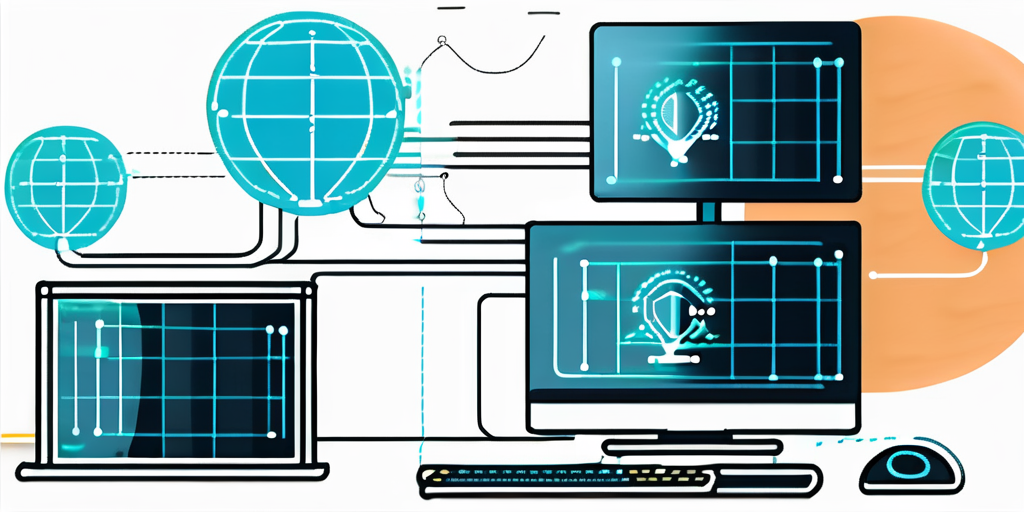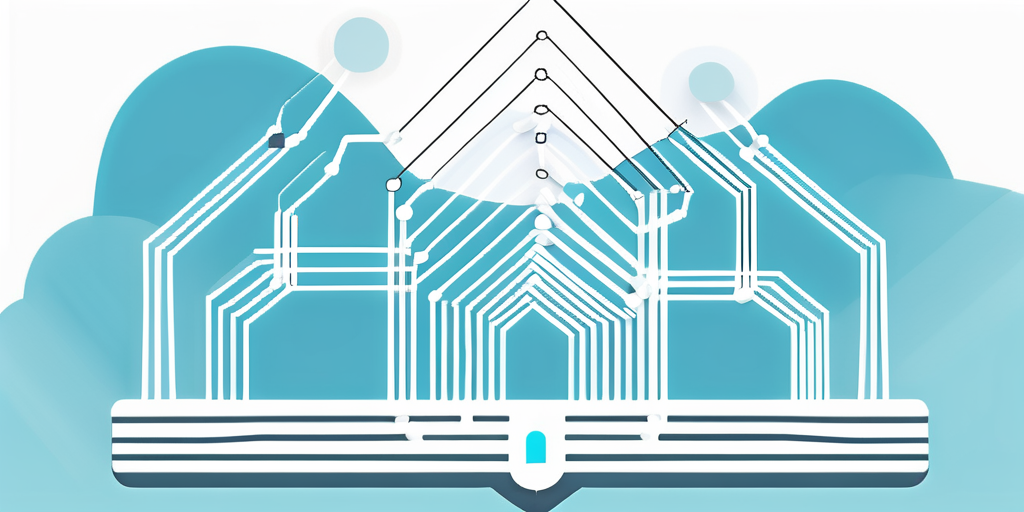Updated July 12, 2025
Network security is of paramount importance. One crucial aspect of securing your network is identifying open ports in your perimeter. Open ports, also known as listening ports or network sockets, play a vital role in network communication but can also pose a significant risk if left unsecured. In this article, we will explore the importance of open ports, their potential risks, techniques for identifying them, interpreting port scanning results, securing your network perimeter, and the future of network perimeter security.
Understanding the Importance of Open Ports
Open ports serve as communication endpoints for various services and applications in your network. They enable data transfer and facilitate network communication. Without open ports, essential network services, such as email, web browsing, and file sharing, would not be possible. However, if not managed properly, these open ports can also become an entry point for unauthorized access.
Regarding network communication, open ports play a vital role in establishing connections between devices. Think of them as doors or gateways that allow data packets to flow in and out of devices. Each port is assigned a specific number, known as a port number, which helps identify the service or application associated with it. For example, port 80 is commonly used for HTTP web traffic, while port 25 is used for SMTP email communication.
By allowing specific ports to remain open, organizations can establish secure communication channels for their intended purposes. For instance, opening port 443 for HTTPS traffic ensures encrypted and secure web browsing. Similarly, opening port 587 for SMTP with STARTTLS provides a secure email communication channel.
Nonetheless, the challenge lies in ensuring that only authorized ports remain open while securing the rest. Failure to properly manage open ports can lead to potential risks and vulnerabilities.
The Role of Open Ports in Network Communication
In network communication, open ports allow data packets to flow in and out of devices. Each port is assigned a specific number, known as a port number, which helps identify the service or application associated with it. For example, port 80 is commonly used for HTTP web traffic, while port 25 is used for SMTP email communication.
By allowing specific ports to remain open, organizations can establish secure communication channels for their intended purposes. Nonetheless, the challenge lies in ensuring that only authorized ports remain open while securing the rest.
Open ports are like the lifelines of network communication. They enable the smooth data transfer between devices, ensuring that information reaches its intended destination. Without open ports, the internet as we know it would not exist. Imagine being unable to browse websites, send emails, or share files with others. It would be a digital world at a standstill.
Open ports are not limited to individual devices. They also play a crucial role in connecting different networks. For example, when you access a website hosted on a remote server, your device communicates with that server through open ports, allowing the transfer of data back and forth.
Potential Risks of Unsecured Open Ports
Unsecured open ports can allow cyber attackers to infiltrate your network and compromise sensitive data. They allow malicious actors to exploit vulnerabilities in services or applications running on those ports.
For example, an outdated or misconfigured web server running on an open port can be vulnerable to attacks like cross-site scripting (XSS) or SQL injection. These attacks can allow hackers to inject malicious code into web pages or manipulate database queries, potentially leading to unauthorized access or data leakage.
Similarly, an unsecured file transfer protocol (FTP) server can allow unauthorized access to confidential files. If an FTP server is left open without proper authentication mechanisms, anyone with knowledge of its IP address and port number can potentially gain access to sensitive information.
Therefore, it is crucial to identify and secure open ports to mitigate the risks associated with unauthorized access and potential data breaches. Organizations must regularly assess their network infrastructure, identify any unnecessary open ports, and implement appropriate security measures to protect against possible threats.
Basics of Network Perimeter
It’s important to have a solid understanding of the network perimeter to understand open ports within your network. The network perimeter is the boundary that separates your internal network from external networks, such as the Internet. It is the first line of defense against unauthorized access and cyber threats.
The network perimeter plays a crucial role in maintaining the security and integrity of your network. It acts as a shield, protecting your internal network from potential attacks and unauthorized access. By understanding the components and architecture of the network perimeter, you can effectively identify and secure open ports, ensuring the safety of your network.
Defining Network Perimeter
The network perimeter includes all the devices and services directly exposed to external networks. This typically includes firewalls, routers, switches, and servers. It represents the first point of interaction between your network and the outside world.
Firewalls, in particular, play a vital role in defining the network perimeter. They act as a barrier between your internal and external networks, monitoring and controlling incoming and outgoing traffic based on predefined security rules. By filtering and blocking unauthorized access, firewalls help maintain the integrity of your network perimeter.
Understanding your network perimeter’s specific components and architecture is essential for effectively identifying and securing open ports. It allows you to establish a strong defense mechanism, safeguarding your network against potential threats.
Components of a Network Perimeter
A typical network perimeter consists of several components, each with its role in securing the network. Some of the key elements include:
- Firewalls: Firewalls act as a barrier between your internal network and external networks. They control incoming and outgoing traffic based on predefined security rules, helping to filter and block unauthorized access.
- Routers: Routers facilitate the flow of data between different networks and serve as gateways for incoming and outgoing traffic. They can be configured to forward specific traffic to designated devices or services.
- Switches: Switches connect network devices within your internal network, allowing communication between them. They help manage and direct network traffic efficiently.
- Servers: Servers host various services and applications, such as email servers, web servers, and database servers, which are essential for network functionality.
These components work together to establish a secure network perimeter, forming the foundation for identifying and securing open ports. Firewalls act as the first line of defense, filtering and blocking unauthorized access. Routers and switches ensure the smooth flow of data within the network, while servers host essential services and applications.
By understanding the role and importance of each component, you can effectively manage and secure your network perimeter, minimizing the risk of unauthorized access and potential security breaches.
Techniques for Identifying Open Ports
Identifying open ports is crucial for assessing the security posture of your network perimeter. Several techniques can help you effectively identify these open ports.

Open ports can serve as potential entry points for attackers, allowing them to exploit vulnerabilities and gain unauthorized access to your network. Therefore, it is essential to have a comprehensive understanding of the open ports within your network perimeter to take appropriate measures to secure them.
Using Network Scanning Tools
Network scanning tools, such as Nmap and Nessus, are widely used to discover open ports within a network. These tools send probes to various ports on target devices to determine their status – whether they are open, closed, or filtered.
Nmap, for example, utilizes various scanning techniques, including TCP SYN scan, TCP connect scan, and UDP scan, to identify open ports. It provides detailed information about the services running on those ports, such as the software version and the operating system.
On the other hand, Nessus is a vulnerability scanner that identifies open ports and assesses the security vulnerabilities associated with those ports. It can provide a comprehensive report highlighting potential weaknesses that need to be addressed.
By performing network scans using these tools, you can obtain a comprehensive list of open ports in your network perimeter. This allows you to assess potential vulnerabilities and take appropriate measures to secure those ports.
Manual Methods for Port Identification
In addition to automated network scanning tools, manual methods can also be employed to identify open ports. System administrators can review network configurations, device logs, and network diagrams to understand the ports that are intentionally left open for specific services.
Network configurations, such as firewall rules and router settings, can provide valuable insights into the ports allowing incoming connections. Device logs, however, can reveal any suspicious activities or unauthorized access attempts on specific ports.
Network diagrams, which visually represent the network infrastructure, can help identify open ports by mapping the connections between devices and their services. This can be particularly useful in complex network environments.
Combining automated tools with manual checks gives you a holistic view of the open ports in your network perimeter and ensures that only authorized ports remain accessible. This multifaceted approach enhances your ability to detect potential vulnerabilities and strengthens your network’s security.
Interpreting Port Scanning Results
Once you have performed port scanning, it is important to understand the results to secure your network perimeter effectively.

Port scanning is a crucial step in assessing your network’s security. It allows you to identify open ports vulnerable to attacks and take appropriate measures to secure them. However, knowing that a port is open or closed is not enough. To make informed decisions, you must delve deeper into the port scanning results.
Understanding Common Port States
Port scanning results typically classify ports into various states, providing insights into their accessibility:
- Open: An open port indicates that a service or application is actively accepting incoming connections on that port. These ports can potentially be exploited by attackers if not properly secured.
- Closed: A closed port means that a service or application is not listening on that specific port. This indicates a lower risk of unauthorized access through that port.
- Filtered: A filtered port does not respond to the scanning probes, making it challenging to determine its state. This can be due to firewall restrictions or other network security measures.
Understanding these port states allows you to prioritize and focus on securing open ports, mitigating potential risks. Open ports are like unlocked doors, inviting potential attackers to exploit vulnerabilities. By identifying and securing these open ports, you can significantly enhance the security of your network.
Deciphering Port Numbers and Services
Each open port is associated with a specific port number, which maps to a service or application. For example, port 22 is commonly used for SSH (Secure Shell) access, while port 443 is used for HTTPS web traffic.
Deciphering port numbers and their associated services provides valuable insights into each open port’s purpose and potential security implications. By understanding the services running on these ports, you can assess the potential risks they pose and implement appropriate security measures.
It is essential to monitor the services associated with open ports and ensure that they are up to date with the latest security patches. Outdated or vulnerable services can serve as entry points for attackers, compromising the security of your network.
Furthermore, understanding the services running on open ports allows you to implement additional security measures specific to those services. For example, suppose you have an open port associated with a web server. In that case, you can focus on implementing web application firewalls or intrusion detection systems to protect against common web-based attacks.
Securing Your Network Perimeter
Now that you have identified open ports within your network perimeter, it is essential to implement measures to secure them effectively.

Securing your network perimeter is a critical step in protecting your organization’s sensitive data and resources. By implementing a robust security strategy, you can ensure that only authorized networks and devices have access to your network’s open ports.
Implementing Firewall Rules
Firewalls are central in securing your network perimeter, including controlling access to open ports. By defining and enforcing appropriate firewall rules, you can restrict access to open ports to authorized networks or devices only.
When implementing firewall rules, following the principle of least privilege is crucial. This principle advocates leaving only the necessary ports open and restricting access to trusted sources. By adhering to this principle, you can significantly reduce your network’s attack surface and minimize the risk of unauthorized access.
Furthermore, it is essential to regularly review and update your firewall rules to adapt to evolving security threats. By staying vigilant and proactive in managing your firewall configurations, you can ensure your network remains secure against emerging vulnerabilities.
Regular Network Monitoring and Maintenance
Regular network monitoring is essential to detect and respond to any anomalous activities or potential security breaches. By implementing robust monitoring systems and regularly reviewing network logs, you can identify any unauthorized attempts to access open ports and take immediate action to mitigate any threats.
Network monitoring involves continuously observing network traffic, system logs, and security events. This proactive approach allows you to identify any suspicious activities, such as port scanning or unauthorized access attempts, and respond promptly to prevent any potential security incidents.
In addition to monitoring, regular network maintenance is crucial for maintaining a secure network perimeter. Keeping your network infrastructure updated with the latest security patches and firmware updates is essential for minimizing vulnerabilities and ensuring optimal network security.
Software vendors regularly release security patches to address known vulnerabilities in their products. By promptly applying these patches, you can protect your network from potential exploits that could compromise the security of your open ports.
Similarly, keeping your network devices’ firmware up to date is vital for ensuring they have the latest security features and bug fixes. Outdated firmware can introduce security weaknesses that attackers can exploit to gain unauthorized access to your network.
The Future of Network Perimeter Security
As technology evolves, so do the methods and technologies used to secure network perimeters.
Emerging Technologies in Port Security
New technologies are being developed to enhance port security, such as intrusion detection and prevention systems (IDS/IPS), which monitor network traffic for suspicious activities and automatically block potential threats.
Similarly, next-generation firewalls (NGFW) employ advanced threat intelligence, deep packet inspection, and application-awareness capabilities to provide enhanced security and protect open ports from sophisticated attacks.
The Role of AI in Network Security
Artificial intelligence (AI) and machine learning (ML) revolutionize network security by enabling real-time threat detection and response. AI algorithms can analyze vast network data and identify patterns indicative of potential security breaches.
Organizations can proactively detect and mitigate threats to their network perimeter by leveraging AI-driven network security solutions, including securing open ports.
Conclusion
Identifying open ports in your network perimeter is crucial for maintaining a secure and resilient network. By understanding the importance and risks associated with open ports, implementing effective techniques for port identification, interpreting scanning results, securing those ports, and adapting to emerging security technologies, you can significantly enhance your network’s security posture. Vigilance and proactive measures are essential to safeguard your network perimeter and protect against potential threats.
Ensuring the security of your network perimeter is a complex task that requires expertise and constant vigilance. At Blue Goat Cyber, we understand the critical importance of protecting your business from cyber threats. As a Veteran-Owned business specializing in cybersecurity services, including medical device cybersecurity, penetration testing, and compliance with HIPAA, FDA, SOC 2, and PCI standards, we are dedicated to securing your operations against attackers. Contact us today for cybersecurity help and partner with a team as passionate about your security as you are about your business.
